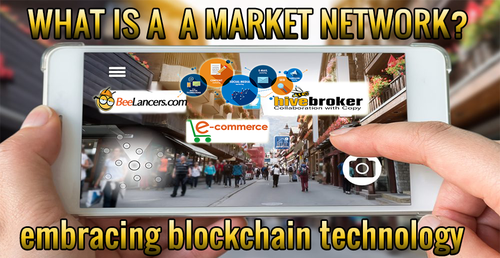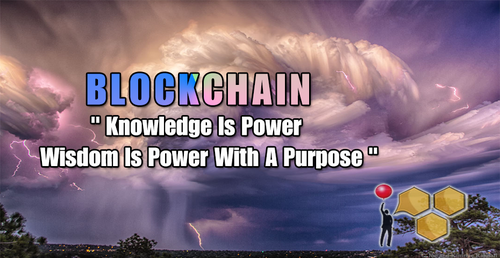
What Is A Market Network?

Back in 2015, it was exhibited that the next 10 years would be all about Market Networks whereas the last decade was focused on Social Networks. There were a few companies mentioned that were deemed to be market networks and essentially had the key factors of a market network and what it is purported to be. However, since then we have gone next level with blockchain technology. But has any of those market networks actually adopted this new and beneficial technology?
So what exactly is a Market Network?
A market network is a combination of a marketplace and a social network that includes SaaS which helps the individuals in the market network to work with customers and other service providers to build relationships rather than just quick transactions we experience on eBay or Amazon.
Marketplaces are essentially about selling your product or service even though reviews of goods purchased by the customer are there to guide potential customers’ purchasing decisions. However, marketplaces are predominantly where buyers and sellers meet for one-off transactions. Typically, marketplaces are an accumulation of sellers.

We all know what social networks are. Over the last 15 years, most of us have participated in Facebook or Linked to communicate with people and build relationships for whatever reason. However, commerce is not the core objective of social networks.
SaaS (Software as a Service) are business applications, including email and collaboration, customer relationship management (CRM), billing/payroll processing, sales management, human resources management, financial management, database management, enterprise resourcing planning (ERP), content management, and document editing and management.
So what we had was two separate places for your online presence and commerce. A marketplace to sell stuff, and a social network to build relationships. The SaaS doesn’t exist on these platforms, that’s separate and an added expense for business owners and marketers.

But what if you provide a service that is more involved than a simple buy-sell transaction. On top of that, what if you need collaboration with other professionals in your industry to form a team to provide a complete service?
Well, that’s what market networks are all about. In the market network, you are a service provider, but also a person with a profile, with history, reviews, score, etc. You can team up with other people to provide a complex service to a customer and channel the workflow through a SaaS solution.
How Does Blockchain Fit Into The Market Network Model?
To be successful in online branding and operating a business in the ever-expanding internet world, you must maintain your profile in many networks, social and market. It’s difficult to effortlessly scale your reputation from one network to a different one. They are pretty much isolated from each other and they can’t communicate with each other, nor do they really want to because they generally belong to someone. And it so happens that “someone” is never the community that brings value to the platform. It’s not easy for a centralized market network to diversify among service providing platforms and it takes a lot of effort to build and maintain individual profiles that you can only use in an isolated network.
What if your online identity always belonged to you, not a service or platform? And also, the reputation of your branding was maintained by the network and that network also belonged to you? In other words, a decentralized reputation that would enable you to plug into any other centralized network. You see, when your reputation is decentralized, the entire digital space becomes your network.
Blockchain is the ultimate framework or infra-structure tool that gives individuals true ownership of their digital selfhood and reputation. It creates self-sovereignty.

Decentralization In The Marketplace
Decentralization has many features that are beneficial for industries and users around the world. Reduced fees, increased efficiencies, removal of biased agendas and tiers of corruption and greed.
There have been companies like Airbnb and Uber that introduced a new era allowing people to rent out and monetize items. Or eBay and Etsy allowed people to sell products online and Upwork and Fiverr helped freelancers to sell their services. At this stage, these companies are all centralized and very linear with no collaboration between them.
Enter Blockchain.
A decentralized marketplace allows for true peer-to-peer transactions without centralized authorities taking their fees. This is made possible through blockchain technology and smart contracts. We no longer need the trusted third party verifying sellers and ensuring payments.
Decentralization In Social Media
The traditional social media platforms are losing their edge, and their users have taken a massive beating. While some have given up on their social media world completely because it’s affecting their psychological well-being, some have become very disappointed with the fact that the benefit of their work was being passed onto the site more than them or their hard work has been deleted by centralized authorities due to hidden agendas.
If this wasn’t enough, user data, which is meant to be confidential, is being made available in the open market, with governments, advertising companies and more having access to it. This has made users apprehensive about sharing personal details of their lives.

Enter Blockchain
Blockchain is going to transform the user experience in social media networking. These are important factors like the users’ information is encrypted on the blockchain network, so the privacy of data is maintained. Also, a platform can offer monetary compensation and loyalty programs for any and all activity performed by the user. Imagine producing viral content on the platform and getting paid for it? This does not happen on traditional social media, fast becoming a product of drama, agendas, and antiquity.
There are upcoming platforms that are classed as social media on the blockchain whereby you can monetize your blogs, some even have a messaging app integrated, but it stops there. Imagine a complete Market Network as described above that is decentralized, pluggable, and portable which are key components and that have the capabilities to have your marketing, blogging, Storefronts, in fact, all your branding goes viral across all platforms in the internet space?
Enter Markethive – Embracing Blockchain Technology
Markethive is a social marketplace, digital media platform for entrepreneurs that have the combined power of Facebook/LinkedIn, Marketo/Hubspot and Amazon/eBay along with Crypto News Sites like Cointelegraph/Bitcoin.com. Delivering a dynamic social network, integrated with Inbound Marketing (SAAS), numerous commerce platforms, storefronts coupled with augmented reality, and multiple traffic portals, built on the blockchain.
Does It Pay?
Markethive is a next-generation Market Network and the first to adopt blockchain technology that has positioned itself as a complete ecosystem for Entrepreneurs. Using the latest technology, it provides prosperous solutions for all business owners, marketers who require an online presence. Including Markethive’s own Coin (MHV) and Crypto Exchange for ease of liquidity as well as purchasing products and services within the Markethive ecosystem.
Creating a “Universal Income” for entrepreneurs, Markethive is delivering an infinity airdrop incentive to new subscribers, Bounty, and Loyalty programs and has set up the entire system with faucet like or micropayment rewards for using the system, including “Tips” instead of “Likes” This means the whole system is monetized for the benefit of all users. The income potential is huge and the MHV Coin ensures that all users will earn money for everything they do in Markethive.

So What Do You Get?
Markethive's functionalities include SEO features, Analytics, Customer Management System, Traffic Portals, Capture Page and Lead Creation, Profile Page, Resume, E-commerce portals, Video Conferencing, Blogging Platform, Messaging, Press Release, and Sponsored Article distribution, Banner Program and much more. Also included are significant training tutorials and weekly live support meetings, with a step by step automated tutorial system in the works.
Inbound Marketing is a key component of Markethive’s embodiment. Markethive plugs into all Social Media, simplifying your marketing efforts, with automated email campaigns allowing for lead flow into your designated business. Markethive incorporates collaboration building relationships within the community.
Did I mention that the inbound marketing component is free to use while being rewarded with MHV? The only thing that is more rewarding beyond your wildest dreams is the loyalty program which enables you to profit from all facets of the Markethive system including receiving dividends from the company’s net profits. It basically means you as part of the Markethive community own a piece of Markethive, unlike the centralized companies with their venture capitalists and shareholders.

Conclusion
The potential of what the blockchain offers is extremely exciting. And although we are seeing some companies integrating the blockchain as they see what it can do for them and the world holistically, large scale adoption may still take some time. However, the unconventionality of this next-level technology shouldn’t deter marketers, business owners, entrepreneurs, in fact, anyone with a social or marketplace profile from embracing this new protocol given that it offers people many advantages in the form of transparency, security, anonymity, and performance with the added benefit of self-sovereignty.
In the next article, we will explore Inbound Marketing and blockchain. Stay tuned…

David Ogden
A Crypto/Blockchain enthusiast and a strong advocate for technology, progress, and freedom of speech. I embrace "change" with a passion and my purpose in life is to help people understand, accept and move forward with enthusiasm to achieve their goals.
David https://markethive.com/david-ogden



























